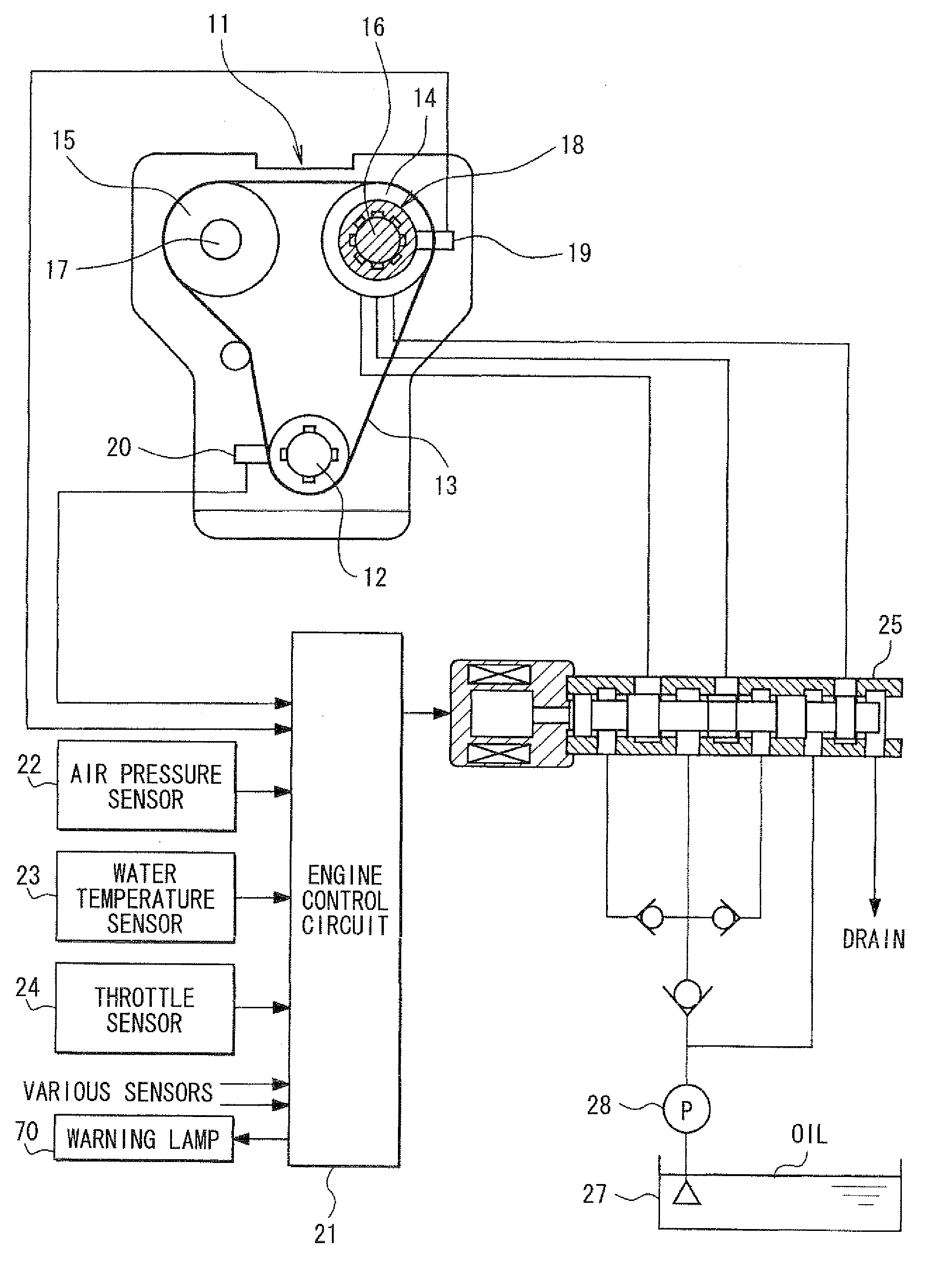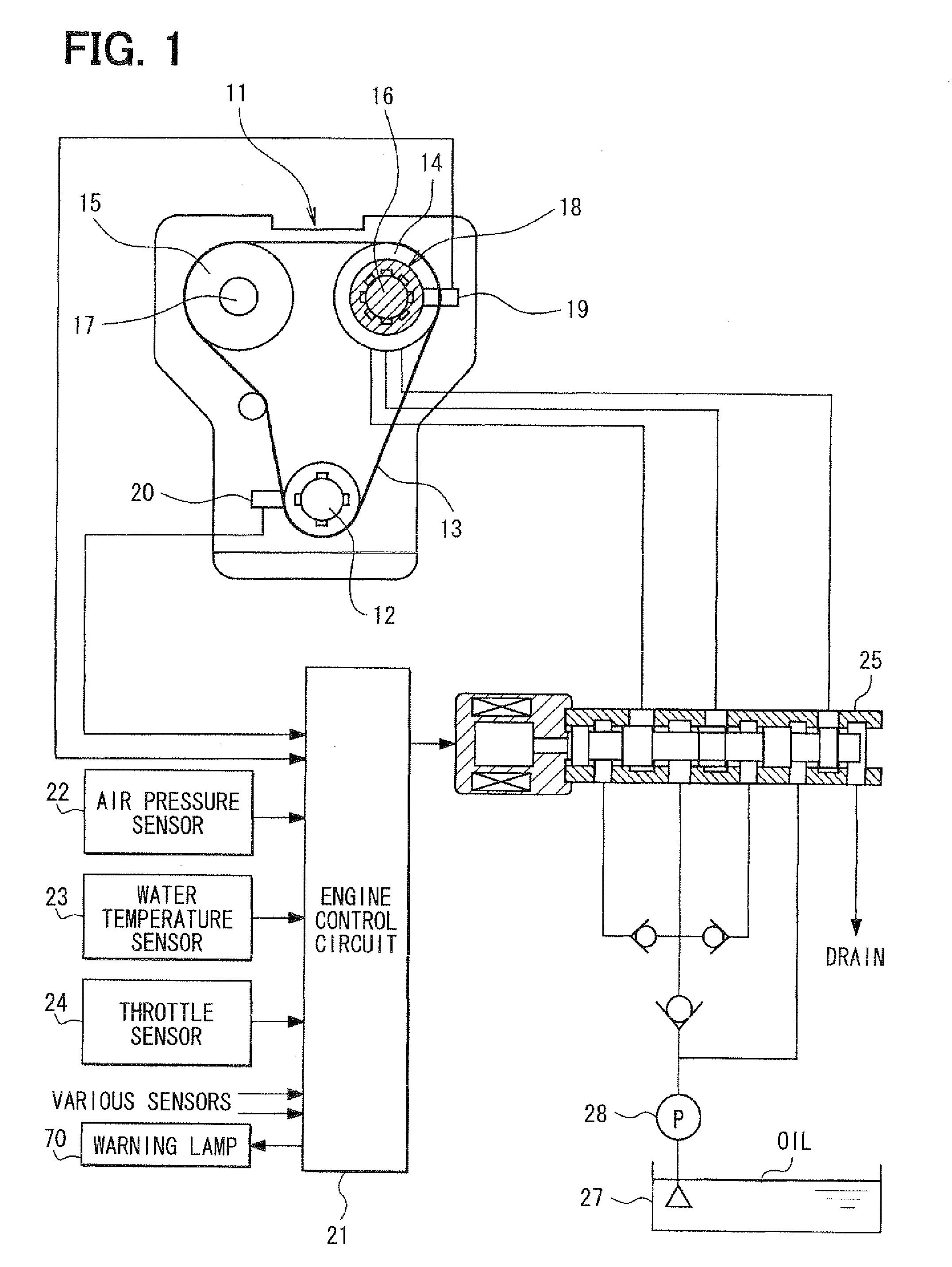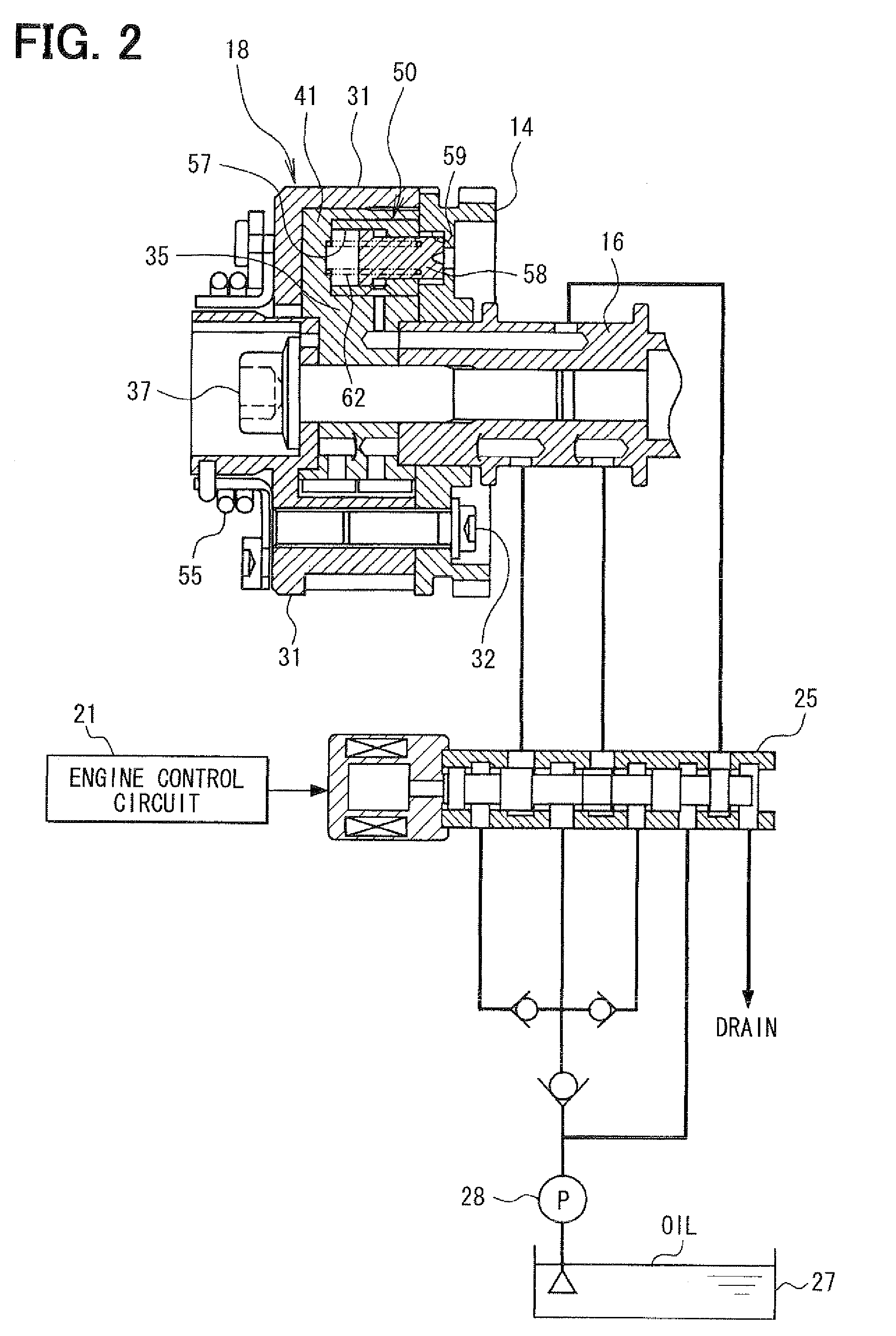Variable valve timing control apparatus and method for controlling variable valve timing device
a timing control and variable valve technology, applied in electrical control, non-mechanical valves, instruments, etc., can solve the problems of inability to maintain the stability of idling operation after engine start, abnormal condition needs to be immediately detected, and engine startability may be impaired
- Summary
- Abstract
- Description
- Claims
- Application Information
AI Technical Summary
Benefits of technology
Problems solved by technology
Method used
Image
Examples
first embodiment
[0023]As follows, a first embodiment will be described with reference to FIGS. 1 to 7. As shown in FIG. 1, in an internal combustion engine 11, an output power of a crankshaft 12 is transmitted to an intake-side camshaft 16 and an exhaust-side camshaft 17 via sprockets 14, 15 and a timing chain 13. The intake-side camshaft 16 is provided with a variable valve timing device 18 (variable cam timing: VCT) for controlling an advance (VCT phase) of the intake-side camshaft 16 relative to the crankshaft 12.
[0024]A cam angle sensor 19 is provided on the outer circumferential periphery side of the intake-side camshaft 16 to output a pulse of a cam angle signal at a predetermined cam angle interval. A crank angle sensor 20 is provided on the outer circumferential periphery side of the crankshaft 12 to output a pulse of a crank angle signal at a predetermined crank angle interval. The output signals of the cam angle sensor 19 and the crank angle sensor 20 are inputted to an engine control cir...
second embodiment
[0071]Subsequently, a second embodiment will be described with reference to FIG. 8. An intermediate-lock-phase-pass-through determination processing of FIG. 8 according to the present second embodiment is produced by adding a processing of step 119 subsequently to step 118 of the intermediate-lock-phase-pass-through determination processing of FIG. 7 described in the first embodiment. Other processings than additional step 19 is substantially equivalent to that of the first embodiment. The structure other than additional step 19 is substantially equivalent to that of the first embodiment.
[0072]In the present embodiment 2, at step 117, when it is determined that the VCT phase has passed through the intermediate lock phase, and when it is determined to be an abnormal condition in which the lock pin 58 is not normally projected, the processing proceeds to subsequent step 118. At step 118, a driver is warned about an abnormal condition promptly by lighting of the warning lamp 70 and / or ...
third embodiment
[0074]Subsequently, a third embodiment will be described with reference to FIGS. 9, 10. Description of the same portion as that of the first embodiment will be omitted or simplified, and a different portion from the first embodiment will be described. In the present third embodiment, a provisional learning operation is performed. In the provisional learning operation, when a lock request occurs in a period in which learning of the reference phase is not completed, one phase is selected from the most retarded phase, the most advanced phase, and the intermediate lock phase, and the selected phase is learned as a provisional reference phase. In this manner, when a lock request occurs before completion of learning of the reference phase, one phase is selected as a provisional reference phase from the most retarded phase, the most advanced phase, and the intermediate lock phase. The provisional reference phase is the easiest to be learned or on the most safety side. Thus, the VCT phase c...
PUM
 Login to View More
Login to View More Abstract
Description
Claims
Application Information
 Login to View More
Login to View More - R&D
- Intellectual Property
- Life Sciences
- Materials
- Tech Scout
- Unparalleled Data Quality
- Higher Quality Content
- 60% Fewer Hallucinations
Browse by: Latest US Patents, China's latest patents, Technical Efficacy Thesaurus, Application Domain, Technology Topic, Popular Technical Reports.
© 2025 PatSnap. All rights reserved.Legal|Privacy policy|Modern Slavery Act Transparency Statement|Sitemap|About US| Contact US: help@patsnap.com



